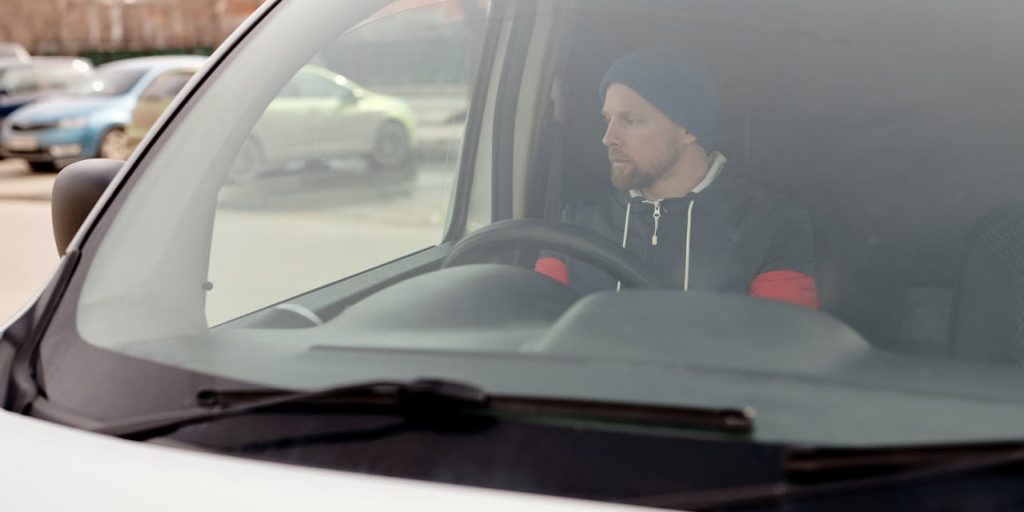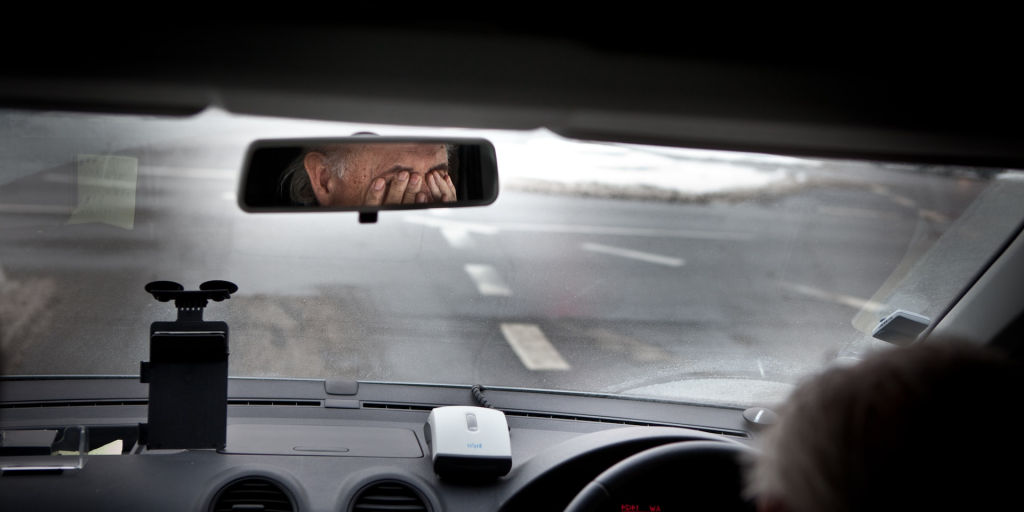6 Startling Driver Safety Statistics Every Fleet Manager Needs To Know
In the world of commercial driving, we know that road safety is always going to be a top priority – after all, everyone managing a fleet has a responsibility to get their team home safe at the end of the day.
Driving for work brings increased risks, with more time spent on the road meaning more exposure to potential hazards and dangerous conditions. However, it can sometimes be easy to overlook the simple habits and small changes that drivers can adopt to reduce risk and keep themselves and other road users safe.
We’ve rounded up several of the most shocking road safety stats to help remind fleet managers of the realities faced by fleet drivers – and what can be done to overcome these dangers.
1. 29% of all fatalities on the UK’s roads involve people driving for work (Highways England)

Almost a third of all road deaths occur as a result of commercial driving, whilst 21% of all casualties on UK roads (including those who are killed, seriously injured, or slightly injured) are caused by driving-for-work collisions.
This means that on average, across the UK, more deaths happen because of at-work journeys than occur at the workplace, despite the high accident rates in industries such as farming and construction.
It should be noted that commercial drivers themselves are not as disproportionately affected by this as you might expect, making up just 12% of the total fatalities within the dataset. 5% of the fatalities occurred in passengers, whilst 83% of those killed in at-work collisions were other non-working road users.
What this highlights is a need for fleets to prioritise driver safety and education, making sure that every driver is aware of the rules of the road, the dangers of distracted driving, and the repercussions of dangerous habits such as aggressive driving.
2. Over 90% of all collisions are caused by human error (NHTSA)

The truth about road traffic accidents is that in almost every case, there’s actually no ‘accident’ involved and the incident happens as a result of driver error, either through careless, distracted, or aggressive driving.
In fact, vehicular or infrastructure-related causes are thought to account for less than a third of all collisions, meaning that it is almost always a person making a mistake that causes the crash.
The most common causes, according to the Department of Transport, include the driver failing to look properly; failing to judge the other person’s path or speed; being careless, reckless, or in a hurry; losing control of the vehicle; poorly manoeuvring or turning; braking suddenly; driving too fast for the road conditions; or following another vehicle too closely.
All of these factors are preventable, making it imperative that fleets put the proper safeguards in place to ensure that drivers are not only aware of the risks, but that their health and wellbeing are also prioritised to minimise factors such as stress, tiredness, lack of concentration, road rage, and anxiety.
3. Speeding is a factor in 1 in 4 deadly crashes (Brake)

Driving at higher speeds significantly increases the likelihood of a crash occurring, and speed also dictates how severe the consequences will be. The risk of injury and death increases substantially as drivers clock up more MPH, with the World Health Organisation stating that every 1% increase in speed raises the risk of a fatal collision by 4%.
Speeding reduces a driver’s reaction time and increases the stopping distance of the vehicle, both of which make it more difficult to avoid obstacles on the road. And of course, the higher the speed upon impact, the greater the damage. A pedestrian hit at 30mph has a 1 in 5 chance of being killed, with this rising to 1 in 3 odds if the vehicle speed increases to 35mph, showing just what a difference those extra miles per hour can make.
Speeding is a common issue in fleets, with fines recently hitting record highs. No matter how tight a deadline your drivers may be facing however, it’s never worth the risk of speeding – and research has shown that travelling over the speed limit really doesn’t make that much difference to your journey time. For example, travelling 50 miles (the average motorway journey) at 80mph instead of 70mph would result in a saving of just 5 minutes.
It’s also worth remembering that driving at what is deemed an ‘excessive speed’ is dictated by the conditions of the road just as much as it is by the speed limit, so your fleet drivers need to be mindful of their speed depending on factors such as the weather, congestion, and the state that the road is in too.
4. Drivers who use mobile phones whilst driving are 4x more likely to crash (Brake)

The latest figures from the Department of Transport suggest that there may be more than 50,000 instances of people driving while using a handheld phone on the UK’s roads every day. In other words, 3 in every 1000 drivers are regularly using their phone behind the wheel.
Even more shockingly, commercial drivers are the most likely group to use a mobile phone whilst driving. Van drivers in LCVs are the most commonly reported group, with triple the phone usage of car drivers – despite there only being a quarter of the number of vans on the road as there are cars. HGV drivers are the second most likely group to break the law and use a handheld device whilst travelling.
Using a phone whilst driving – both hands-free or handheld – is dangerous as it distracts the driver from the road, taking concentration away from what is happening in front of the vehicle. Talking on the phone can cause ‘inattention blindness’, where drivers may see potential hazards but not fully register them and thus not react in time. Using a handheld device is especially dangerous as it requires the driver to take their eyes off the road and hands off the steering wheel – e.g. to check for new messages – which can have lethal consequences.
Keep phone calls to your drivers to a minimum whilst they’re on the road, and make sure that your team are reminded that using a handheld phone whilst behind the wheel has been illegal since 2003.
5. Over 20% of car crash victims don’t wear a seatbelt (Brake)

Wearing a seatbelt can reduce the risk of death in a serious crash by as much as 50%, making it one of the most effective safety features. And yet, it is thought that up to half a million people choose not to wear one whilst driving, with more than a fifth of car occupants killed in collisions found not to have a seatbelt on. This figure is even higher for crashes that happen between the hours of 6pm-8am, with the number of unbelted victims rising to 41% for nighttime fatalities.
It may seem obvious, but it’s worth making sure your drivers are aware just how essential seatbelts are for road safety. There is an exemption for delivery drivers if they are travelling no more than 50 metres between deliveries, but otherwise, it is a legal requirement that everyone wear a seatbelt whilst travelling in a vehicle.
6. Driver fatigue is a factor in 1 in 5 collisions (RoSPA)

Tiredness is thought to contribute to up to 20% of crashes, and up to 25% of fatal and serious collisions. This is because when drivers are sleepy, alertness and concentration are reduced, whilst reaction times increase. When drivers are so tired that they fall asleep at the wheel, ensuing crashes are 50% more likely to result in death or serious injury due to the driver’s inability to brake or swerve to reduce or avoid the impact.
Those most at risk of experiencing fatigue on the road are professional drivers, owing in large part to the long journeys travelled and the hours of work. In fact, 40% of sleep-related collisions involve commercial drivers.
As a fleet manager, it’s your responsibility to ensure that drivers are not at risk of falling asleep behind the wheel, so take care with journey planning, include time for breaks and rest, and make sure your drivers know the warning signs of fatigue and what steps they should take if they begin to feel tired, such as stopping for a caffeinated drink or a 15 minute nap.
–
Driving is one of the most dangerous work activities that most people do, and it’s estimated that around 150 people are killed or seriously injured every week in collisions involving someone who was using the road for work purposes. But as these statistics prove, the majority of these incidents can be prevented by prioritising road safety and encouraging drivers to adopt safer and more considerate driving practices.
At Lightfoot, we champion fleet safety through our innovative solutions. We help fleet managers to make proactive changes that deliver incredible results, and provide all the tools required to enable safer, smoother, more sustainable driving to become the norm.
Our in-cab driver coaching technology trains drivers in real-time, raising awareness of dangerous habits such as rapid acceleration, excessive speeding, harsh braking, and sharp cornering, and helping drivers to travel more calmly, anticipate potential hazards, and react sooner. Our solution is endorsed by all major UK insurers and brokers as an effective risk management system, and it’s proven to reduce dangerous driving by 84% and at-fault accident rates by 40%.
Similarly, our dashcam solution, Lightfoot Vision, works in tandem with the Lightfoot device to take road safety even further. The driver-facing camera option uses a combination of AI and computer vision to monitor in-cab behaviour and prevent distracted driving, with alerts that help to raise driver awareness of any risky habits such as not wearing a seatbelt, falling asleep, using a mobile phone, or becoming inattentive. This not only advances driver training but also builds a better culture of self-aware driving within your fleet.
To find out more about how Lightfoot can help you keep on top of these startling safety stats and keep your drivers safe on the road, book a meeting with our expert team.